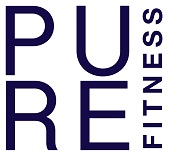In the demanding world of bodybuilding, it’s easy to get caught up in the constant grind of pushing your limits and striving for gains. However, amidst all the sweat and dedication, it’s important to remember the power of rest days. Rest days are not just a break from the gym, they are an essential part of your progress. They allow your muscles to recover, repair, and grow stronger, ensuring that you continue to make strides towards your fitness goals. In this article, we will explore the importance of rest days in bodybuilding and how they can optimize your results.
Table of Contents
ToggleBenefits of Rest Days
Rest days are an essential component of any bodybuilding routine, offering numerous benefits that can help you achieve your fitness goals more effectively. By taking regular rest days, you give your muscles the opportunity to recover and grow, prevent injuries, avoid overtraining syndrome, and improve your overall performance and strength.
Muscle Recovery and Growth
One of the primary benefits of rest days is the promotion of muscle recovery and growth. When you engage in intense workouts, you create micro-tears in your muscle fibers. Rest days allow these tears to heal and your muscles to rebuild, resulting in increased muscle size and strength. Without sufficient rest, your muscles may become overstressed and unable to repair properly, hindering your progress.
Injury Prevention
Rest days play a crucial role in preventing injuries, especially overuse injuries. Continuous and repetitive movements without rest can place excessive strain on your muscles, tendons, and ligaments, increasing the risk of strains, sprains, and other injuries. By incorporating regular rest days into your training program, you give your body the chance to recover and repair, reducing the likelihood of developing chronic injuries.
Reduced Risk of Overtraining Syndrome
Overtraining syndrome occurs when you push your body beyond its limits without adequate recovery. It can lead to fatigue, decreased performance, hormonal imbalances, and even psychological distress. Rest days allow your body to reset and balance its internal systems, helping to prevent overtraining syndrome. By providing your body with the necessary time to rest and recover, you allow it to adapt and grow stronger.
Improved Performance and Strength
Contrary to popular belief, more training does not always equate to better results. In fact, incorporating rest days into your routine can actually improve your overall performance and strength. When you allow your body time to recover, you prevent fatigue from accumulating, optimize muscle repair, and enhance your energy levels. As a result, you can push harder and perform at a higher level during your training sessions, leading to greater gains in strength and performance over time.
Role of Rest Days in Muscle Recovery
Rest days play a crucial role in facilitating muscle recovery by promoting three key processes: repairing muscle damage, replenishing energy stores, and regulating hormones.
Repairing Muscle Damage
During intense workouts, your muscles experience micro-tears in their fibers. Rest days provide the necessary time for these tears to heal and for muscle proteins to be synthesized, resulting in stronger and more resilient muscles. Without adequate rest, the repair process can be hindered, leading to delayed recovery and increased risk of overuse injuries.
Replenishing Energy Stores
Intense training sessions deplete your body’s energy stores, such as glycogen, which is stored in the muscles and liver. Rest days allow for the replenishment of these energy stores, ensuring that you have enough fuel for future workouts. Adequate glycogen levels also support muscle contraction and performance, enabling you to train at higher intensities.
Regulating Hormones
Rest days also play a crucial role in regulating the hormonal balance within your body. Intense workouts can temporarily elevate stress hormones, such as cortisol, which can have negative effects on muscle growth and recovery if chronically elevated. By incorporating rest days into your routine, you allow your hormone levels to return to baseline, promoting optimal recovery and muscle-building processes.
Preventing Injuries with Rest Days
Rest days are essential for preventing injuries and promoting long-term joint and muscle health. They help reduce the risk of overuse injuries, prevent muscular imbalances, and promote joint health.
Reducing the Risk of Overuse Injuries
Overuse injuries occur when you repeatedly stress a specific muscle, tendon, or joint without providing sufficient recovery time. Rest days allow your body the opportunity to repair and strengthen these structures, reducing the risk of overuse injuries. By incorporating regular rest days into your training program, you give your body the chance to heal and adapt, preventing the accumulation of stress and potential injuries.
Preventing Muscular Imbalances
Intense and repetitive training without rest can lead to muscular imbalances, where certain muscles become stronger or more developed than others. Rest days help restore balance by allowing weaker muscles the opportunity to catch up and grow. By incorporating rest days into your routine, you can address muscular imbalances and improve overall strength and stability.
Promoting Joint Health
Rest days are vital for maintaining joint health and preventing joint-related injuries. Intense training can place significant stress on your joints, particularly if they are not given sufficient time to recover. By incorporating rest days into your training program, you allow your joints to rest and reduce inflammation, promoting their overall health and longevity.
Avoiding Overtraining Syndrome
Understanding overtraining syndrome and its potential consequences is crucial for optimizing your training program. Rest days play a pivotal role in avoiding overtraining syndrome by providing your body with the necessary time to recover and adapt.
Understanding Overtraining Syndrome
Overtraining syndrome is a condition that occurs when you exceed your body’s ability to recover from training stress. It can lead to a range of negative effects on both your physical and mental well-being. Overtraining can be caused by excessive training volume, intensity, or a lack of adequate rest and recovery.
Signs and Symptoms
Recognizing the signs and symptoms of overtraining syndrome is essential for avoiding its negative consequences. Common signs include persistent fatigue, decreased performance, mood disturbances, decreased immune function, and recurrent injuries. If you experience these symptoms, it’s crucial to incorporate rest days into your training program to allow your body to recover.
Effects on Progress and Performance
Overtraining can have detrimental effects on your progress and performance. Instead of achieving gains in strength and muscle mass, you may experience plateaus or even regress in your fitness goals. By incorporating rest days, you ensure that your body has sufficient time to adapt and grow, optimizing progress and performance over time.
How Rest Days Help
Rest days help prevent overtraining syndrome by allowing your body to recover and adapt to the stress of training. During rest days, your muscles repair and grow stronger, hormonal balance is restored, and energy stores are replenished. By strategically incorporating rest days into your training program, you can avoid overtraining syndrome and maximize your gains.
Rest Days for Improved Performance
Rest days are not just essential for preventing injuries and promoting recovery; they also play a crucial role in improving your overall performance. By allowing your body to adapt and recover, rest days facilitate muscle adaptation and enhanced neural efficiency.
Muscle Adaptation and Supercompensation
When you engage in resistance training, you create micro-tears in your muscle fibers. Rest days allow these tears to heal, leading to muscle adaptation and supercompensation. Supercompensation refers to the process where your muscles become stronger and more efficient than before to better handle the training stimulus. By incorporating rest days into your routine, you optimize the supercompensation phase, resulting in improved performance and strength gains.
Enhanced Neural Efficiency
Rest days not only benefit your muscles but also your nervous system. Intense training places significant demands on your neural pathways, which can become fatigued if not given adequate rest. Rest days allow your nervous system to recover, improving neural efficiency, and coordination. As a result, you can perform exercises with better form and exert more force, leading to enhanced performance and strength.
The Optimal Frequency of Rest Days
The optimal frequency of rest days varies depending on individual factors, training intensity, and volume. It’s essential to listen to your body’s signals and make adjustments accordingly to ensure adequate recovery and progress.
Individual Variations
Every individual is unique, and their recovery needs may differ. Factors such as age, fitness level, training experience, and overall health can affect the optimal frequency of rest days. Some individuals may require more frequent rest days, while others may be able to handle more intense training without compromising recovery. Pay attention to how your body responds to your training program and adjust your rest days accordingly.
Training Intensity and Volume
The intensity and volume of your training play a crucial role in determining the frequency of rest days you require. Intense and high-volume workouts place greater stress on your muscles and require more recovery time. On the other hand, lower intensity or shorter duration workouts may not demand as much recovery time. It’s essential to strike a balance between pushing your limits and providing your body with sufficient rest.
Listening to Your Body’s Signals
Your body is constantly providing you with feedback signals that can help you determine when to incorporate rest days. Pay attention to signs of persistent fatigue, muscle soreness that persists for an extended period, decreased performance, and changes in mood or sleep patterns. If you experience these signs, it may be an indication that your body needs additional rest to recover properly.
Making the Most of Rest Days
Rest days should be seen as an opportunity to optimize recovery and minimize the risk of injury. By incorporating various strategies, such as active recovery, proper nutrition and hydration, and mental and emotional relaxation, you can make the most of your rest days.
Active Recovery Strategies
Rest days don’t necessarily mean complete inactivity. Engaging in active recovery activities, such as light cardiovascular exercise, stretching, or foam rolling, can help promote blood flow, reduce muscle soreness, and enhance recovery. These activities can also serve as a mental break from intense training, allowing you to stay active while still giving your muscles time to recover.
Proper Nutrition and Hydration
Nutrition and hydration play a crucial role in optimizing recovery on rest days. Ensure you consume a balanced diet rich in protein, carbohydrates, and healthy fats to promote muscle repair and fuel replenishment. Hydrate adequately to support cellular functions and maintain optimal muscle function. A well-nourished and hydrated body can recover more efficiently and prepare for upcoming training sessions.
Mental and Emotional Relaxation
Rest days are not just about physical recovery; they’re also an opportunity to recharge mentally and emotionally. Engage in activities that help you relax, unwind, and reduce stress. This can include hobbies, meditation, spending time with loved ones, or simply enjoying some quality time alone. Taking care of your mental and emotional well-being can enhance overall recovery and keep you motivated for future training sessions.
Balancing Rest Days with Active Training
Finding the right balance between rest days and active training is crucial for long-term progress and avoiding a sedentary lifestyle. By incorporating lighter workouts, alternating muscle groups, and implementing deload weeks, you can optimize your training while still allowing for adequate recovery.
Incorporating Lighter Workouts
On rest days, you can engage in lighter workouts that focus on different muscle groups or involve lower intensity exercises. These workouts can serve as active recovery sessions or provide an opportunity to work on areas of your body that may need additional attention. Incorporating lighter workouts on rest days helps maintain your training routine while giving specific muscles a break.
Alternating Muscle Groups
Another effective strategy to balance rest days with training is to alternate muscle groups on different days. By doing so, you can give specific muscles a chance to recover while still training other areas of your body. For example, if you perform a leg workout one day, you can focus on upper body exercises on the following day. This approach ensures that each muscle group has sufficient rest between training sessions.
Implementing Deload Weeks
Deload weeks involve reducing training volume or intensity for a specified period, typically every few weeks or months. These planned periods allow your body to recover more comprehensively and reduce the risk of overtraining. Deload weeks can involve lighter workouts, reduced sets or reps, or even complete rest. By implementing deload weeks, you can ensure that your body maintains balance and optimal recovery throughout your training program.
Avoiding a Sedentary Lifestyle
While rest days are crucial for recovery, it’s equally important to avoid a sedentary lifestyle. Incorporating low-impact activities, mobility exercises, and flexibility training can ensure that you remain active and maintain overall fitness on rest days.
Staying Active on Rest Days
Rest days don’t have to mean complete inactivity. Incorporating low-impact activities, such as walking, swimming, or cycling, can still keep you active and contribute to your overall fitness. These activities provide cardiovascular benefits, improve blood flow, and support mental well-being while minimizing the strain on your muscles.
Low-Impact Activities
On rest days, it’s advisable to choose low-impact activities that are gentle on your joints while still providing a degree of physical activity. Yoga, Pilates, or gentle stretching routines can help improve flexibility, mobility, and posture, contributing to your overall fitness goals without overexerting your muscles.
Mobility and Flexibility Exercises
Rest days are an ideal time to focus on mobility and flexibility exercises. These types of exercises improve joint range of motion, reduce muscle tightness, and enhance overall movement quality. Incorporating exercises such as foam rolling, stretching, or yoga can help relieve tension, improve recovery, and optimize overall performance.
Bottom Line
Rest days are not to be underestimated in their importance within a bodybuilding routine. They offer numerous benefits, including enhancing muscle recovery and growth, preventing injuries, avoiding overtraining syndrome, and improving overall performance and strength. By understanding and implementing rest days strategically, customizing them to your individual needs, and finding the right balance between rest and active training, you can optimize your bodybuilding journey and achieve long-term success. Remember to listen to your body, prioritize recovery, and make the most of your rest days to maximize your results.








